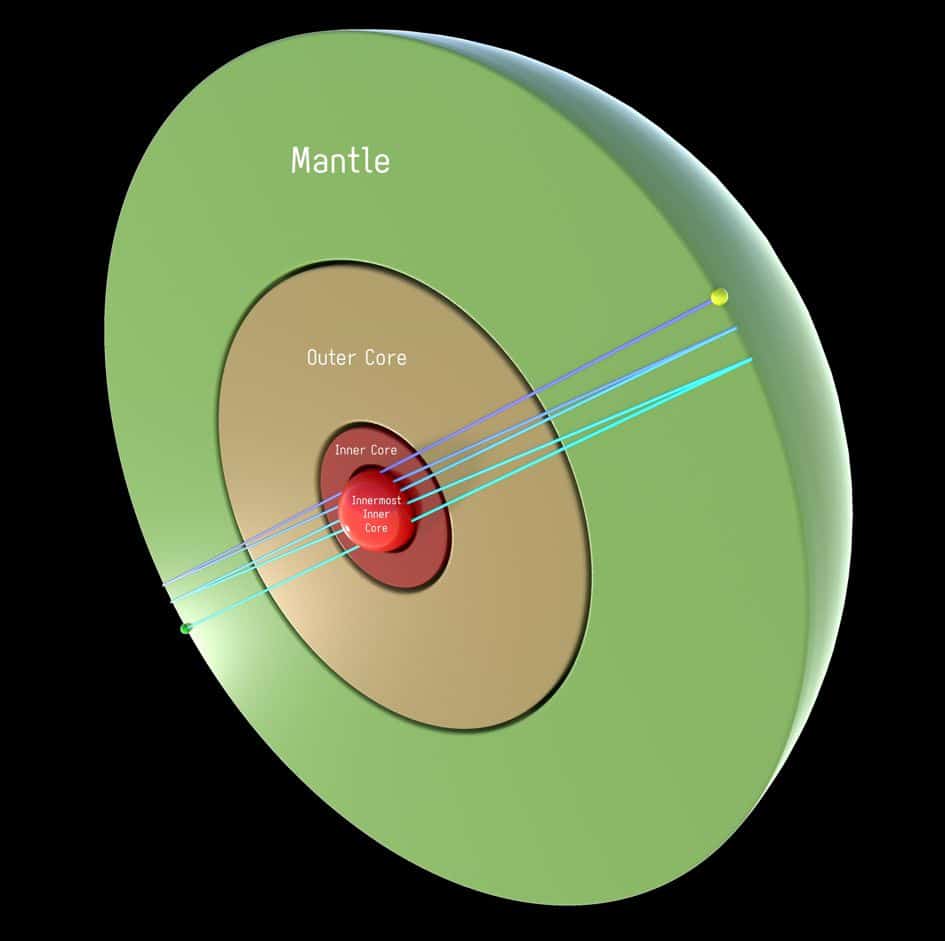Seismologists from The Australian National University claim that data collected from seismic waves produced by earthquakes has revealed new info on the deepest regions of the Earth’s inner core.
The researchers think they’ve found evidence of a solid “metallic ball” at the center of Earth’s deep core by analyzing the speeds at which these waves penetrate and flow through it.
Up until very recently, it was believed that the structure of Earth had four layers: the crust, the mantle, the outer core, and the inner core. The research, which was published in Nature Communications, provides conclusive evidence that there is a fifth layer.

“The existence of an internal metallic ball within the inner core, the innermost inner core, was hypothesized about 20 years ago. We now provide another line of evidence to prove the hypothesis,” remarks researcher Dr. Thanh-Son Phạm.
Professor Hrvoje Tkali of ANU believes that examining the deep interior of Earth’s inner core might reveal more about our planet’s history and development.
“This inner core is like a time capsule of Earth’s evolutionary history – it’s a fossilised record that serves as a gateway into the events of our planet’s past. Events that happened on Earth hundreds of millions to billions of years ago,” he adds.
The researchers looked at seismic waves that go straight through the Earth’s core and “spit out” on the other side of the planet from where the earthquake occurred, known as the antipode. The waves then return to the earthquake’s origin.
The ANU scientists compare this process to the back-and-forth bouncing of a ping pong ball.

“By developing a technique to boost the signals recorded by densely populated seismograph networks, we observed, for the first time, seismic waves that bounce back and forth up to five times along the Earth’s diameter. Previous studies have documented only a single antipodal bounce,” Dr. Phạm adds.
“The findings are exciting because they provide a new way to probe the Earth’s inner core and its centremost region.”
Scientists looked into one earthquake that started in Alaska. This earthquake caused seismic waves to “bounce off” someplace in the south Atlantic before returning to Alaska.
The researchers investigated the anisotropy of the iron-nickel alloy that makes up the inner core of the Earth. Anisotropy is used to explain how seismic waves move faster or slower through the material of the inner core of the Earth, depending on their direction of passage. It could be caused by the way iron atoms are arranged at high temperatures and pressures or by the way crystals grow.
They found that the seismic waves kept probing places near the center of the Earth from different angles as they bounced around. The scientists conclude that the crystallized structure in the innermost area of the inner core is probably different from that in the outer layer by analyzing the variance in seismic wave travel durations for various earthquakes.
According to them, this might explain why, when waves enter the innermost inner core, they either speed up or slow down depending on the angle at which they enter.
According to the ANU researchers, the results show that there may have been a “significant” shift in the crystal structure or texture of the Earth’s deep core at some point in Earth’s evolutionary chronology.
According to Professor Tkalčić, “there are still many unanswered questions about the Earth’s innermost inner core, which could hold the secrets to piecing together the mystery of our planet’s formation.”
The researchers looked at data from about 200 earthquakes with a magnitude of 6 or higher in the last 10 years.
Source: 10.1038/s41467-023-36074-2
Image Credit: Getty
